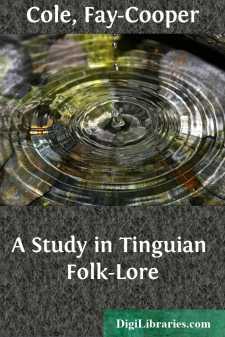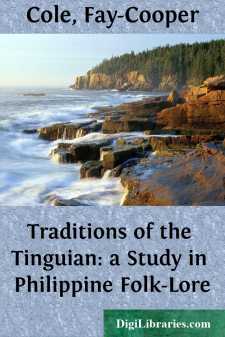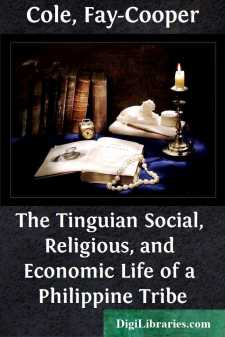Categories
- Antiques & Collectibles 13
- Architecture 36
- Art 48
- Bibles 22
- Biography & Autobiography 813
- Body, Mind & Spirit 142
- Business & Economics 28
- Children's Books 17
- Children's Fiction 14
- Computers 4
- Cooking 94
- Crafts & Hobbies 4
- Drama 346
- Education 46
- Family & Relationships 57
- Fiction 11829
- Games 19
- Gardening 17
- Health & Fitness 34
- History 1377
- House & Home 1
- Humor 147
- Juvenile Fiction 1873
- Juvenile Nonfiction 202
- Language Arts & Disciplines 88
- Law 16
- Literary Collections 686
- Literary Criticism 179
- Mathematics 13
- Medical 41
- Music 40
- Nature 179
- Non-Classifiable 1768
- Performing Arts 7
- Periodicals 1453
- Philosophy 64
- Photography 2
- Poetry 896
- Political Science 203
- Psychology 42
- Reference 154
- Religion 513
- Science 126
- Self-Help 84
- Social Science 81
- Sports & Recreation 34
- Study Aids 3
- Technology & Engineering 59
- Transportation 23
- Travel 463
- True Crime 29
A Study in Tinguian Folk-Lore
by: Fay-Cooper Cole
Description:
Excerpt
A STUDY IN TINGUIAN FOLK-LORE
This paper is based on a collection of Philippine folk-tales recently published by the Field Museum of Natural History. [1] The material appearing in that publication was gathered by the writer during a stay of sixteen months with the Tinguian, a powerful pagan tribe inhabiting the mountain districts of Abra, Ilocos Sur, and Norte, of Northern Luzon. In social organization, government, manner of house building, and many other details of material culture this tribe differs radically from the neighboring Igorot. Observation has also led me to the conclusion that the religious organization and ceremonies of this people have reached a higher development than is found among the near-by tribes, and that this complexity decreases as we penetrate toward the interior or to the south. In the main the folk-tales are closely associated with the religious beliefs of the present day, and hence it seems unlikely that they will be found, in anything approaching their present form, far outside the districts dominated by this tribe. Nevertheless, isolated incidents corresponding to those of neighboring peoples, or even of distant lands, occur several times.
In the following pages an attempt has been made to bring together the culture of this people, as it appears in the myths, and to contrast it to present day conditions and beliefs. In this way we may hope to gain a clearer insight into their mental life, and to secure a better idea of the values they attach to certain of their activities than is afforded us by actual observation or by direct inquiry. It is also possible that the tales may give us a glimpse of the early conditions under which this people developed, of their life and culture before the advent of the European.
It should be noted at the outset that no attempt is here made to reconstruct an actual historical period. As will appear later, a part of the material is evidently very old; later introductions—to which approximate dates may be assigned—have assumed places of great importance; while the stories doubtless owe much to the creative imaginations of successive story tellers.
For the purposes of our study, the tales have been roughly divided into three parts. The first, which deals with the mythical period, contains thirty-one tales of similar type in which the characters are for the most part the same, although the last five tales do not properly fit into the cycle, and the concluding story of Indayo is evidently a recent account told in the form of the older relations.
In the second division are the ritualistic and explanatory myths, the object of which seems to be to account for the origin of or way of conducting various ceremonies; for the belief in certain spirits and sacred objects; for the existence of the sun, moon, and other natural phenomena; for the attainment of fire, food plants, birds and domestic animals, as well as of magical jars and beads. Here it should be noted that some of the most common and important beliefs and ceremonies are, so far as is known, unaccompanied by any tales, yet are known to all the population, and are preserved almost without change from generation to generation....





